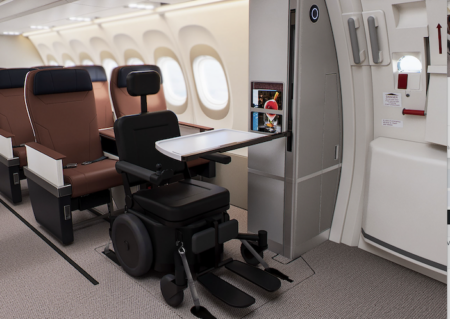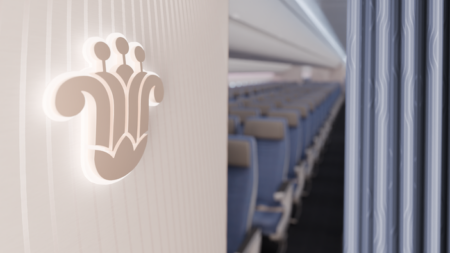Airbus has commenced in-flight trials of the Airspace Connected Experience, a system of IoT (Internet of Things) connected cabin technologies, on board an A350-900 Flight Lab aircraft. According to Airbus it is the first aircraft manufacturer to undertake flight-testing of actual connected cabin innovations, which are being evaluated ahead of their imminent reveal to airline customers.
The Flight Lab may be familiar to some, as it is MSN002, one of the original A350-900 certification flight-test aircraft. The airplane has been fitted with an Airspace cabin as the platform for evaluating the connected cabin technologies in flight, with a view to introducing a new personalised experience for passengers and providing opportunities for improving airlines’ ancillary revenues and operational efficiencies.
Airbus has a policy of revealing new technologies to customers before media, so details are scarce at present, but the company has stated that in collaboration with supplier partners, an initial set of working elements has been installed in the cabin. These elements include prototypes of Recaro’s connected iSeat, Gategroup’s Connected Galley, a remote wireless cabin management control system, a large OLED display and the first step of Airbus’s new ‘IoT backbone’, which includes an open software platform.
Possible benefits of the connected cabin ecosystem include a more personalised travel experience, specifically targeted to passengers’ individual needs and preferences, based on the available data. This system covers pre-ordering and remote ordering of preferred meals, booking of private bin space, setting of individual seat positions as well as a tailor-made inflight IFE offer.
For airlines, the IoT system would enable them to generate additional ancillary revenues through personalised retail and advertisement as well as new services. Airlines could also be able to improve their operational efficiency applying predictive maintenance, avoiding waste and making crew services more efficient. Other opportunities can be created and applied via apps.
For crew, the system may enable them to find a better working environment and more efficient tools, digitally enabled by real-time data from the IoT platform throughout the cabin. A mobile smart device will allow crews to monitor and operate all components.
Customer-centric approach
The in-flight tests are part of Airbus’s customer-centric approach, which began with workshops to create and prioritise innovative concepts, followed by an extensive phase of on-ground testing and customer evaluation of the connected elements. The subsequent testing of these innovations in an Airbus Flight Lab environment is a key step in bringing an integrated Connected Experience to fruition, as engineers can validate and refine them in a real airborne cabin. In particular, the tests allow the various elements to be operated and monitored during a normal flight cycle, especially with regard to the end-to-end data flow robustness within and between the systems. The next steps will continue testing of the current setup, then close the feedback loop with airlines using Airbus’ Customer Experience Teams (CET) forum, by around year-end.





